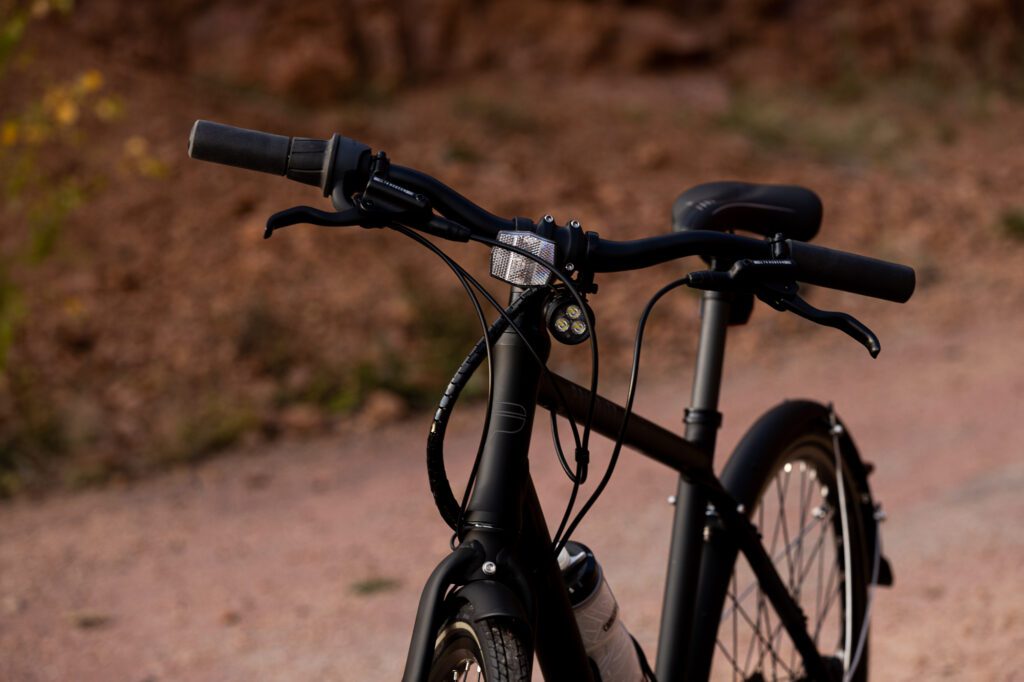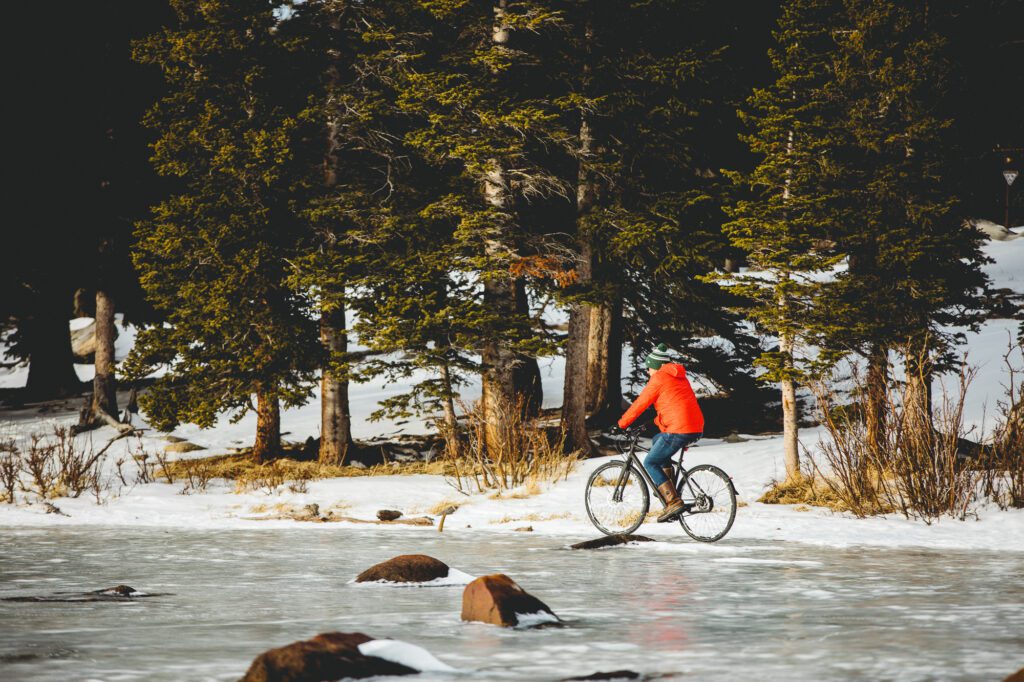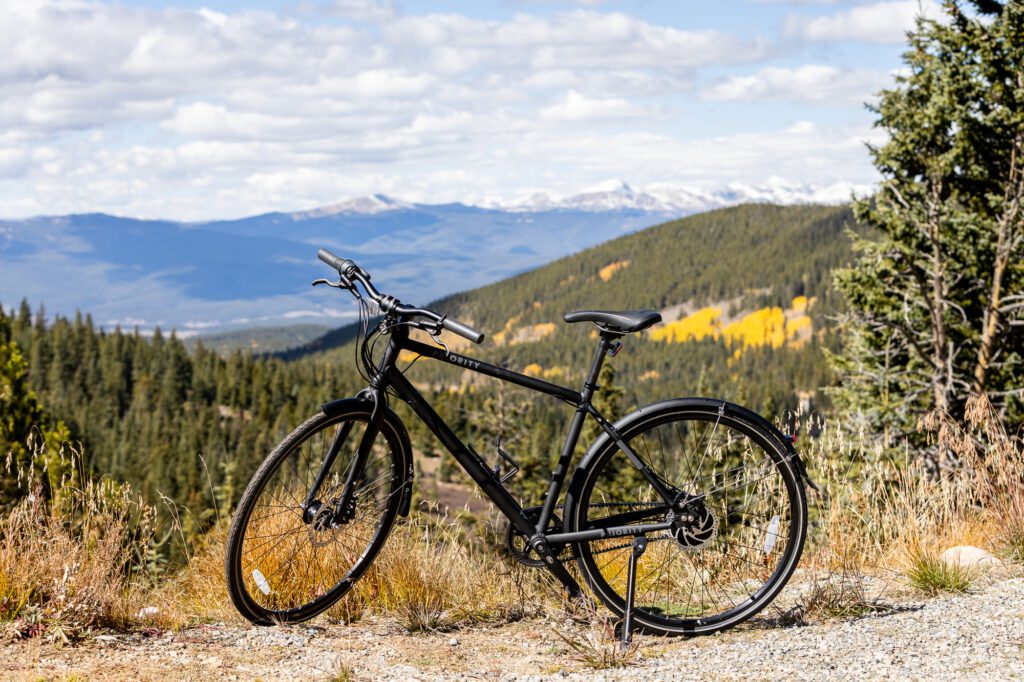
The Priority Continuum Onyx is the perfect bike for city dwellers looking to get around with ease and style. This bike is built to withstand the hustle and bustle of urban life and looks great. The sleek design and onyx black frame gives it a classic yet modern look, perfect for those wanting to stand out. Whether commuting to work, running errands, or just going for a leisurely ride, the Priority Continuum Onyx is the ideal bike for the urban jungle.
- Ideal for year-round use with fully-sealed Weatherproof Enviolo rear hub drivetrain and Gates carbon belt
- Easy assembly
- Easy maintenance
- Smooth CVT shifting and suitable 380% gearing range for flat and hills
- Budget-friendly and well equipped
- Studded tire upgrade for city winter commuting
- Built-in lights powered by peddling.

The Design
The Priority Continuum Onyx features a 6061 T6 Aluminum frame and fork, making it light and stiff. The welds on the frame are neat and precise, with no apparent corners cut. This frame is complemented by a wide range of components, which come together to form a complete package that looks as good as it rides.

The Priority Continuum Onyx’s heart is a Shimano 10-speed drivetrain, offering a smooth and reliable ride. The shifters are Shimano 105, while the rear derailleur is an Ultegra model. Both provide crisp shifting and a wide gear range for tackling any terrain.

This bike also has alloy double wall rims, hydraulic disc brakes for confident stopping, and a carbon fiber fork for a responsive and efficient ride. The saddle and handlebars are ergonomically designed to keep you comfortable for long rides, while the choice of color schemes allows you to make the bike your own.
In summary, the Priority Continuum Onyx has been carefully designed to offer an excellent ride and look great. Its combination of performance components and modern styling will turn heads wherever you go.

The Components
The Priority Continuum Onyx has some excellent components to tackle the urban jungle. The NuVinci N380 CVT drivetrain is one of the most sophisticated pieces of equipments you’ll find on a bike. This drivetrain provides a gear range equivalent to a standard 7-speed chain-driven bike without distinct gears. You can shift using a grip shift, with a smooth progression from easy to difficult. The system also features a carbon belt instead of a chain, and all the shifting components are housed in the rear hub. Plus, it’s silent and requires minimal maintenance – perfect for an urban commuter bike.

The Priority Continuum Onyx also features Tektro hydraulic disc brakes with 160mm rotors front and rear for superior stopping power. Standard configuration includes WTB 32mm wide slick tires with reflective sidewalls for safety and the option to choose studded snow tires for winter riding. There’s also a red rear light and a 400-lumen front light integrated into the bike to keep you visible at night and reduce theft risk, plus a dynamo front hub that eliminates the need for charging.

The Ride
The Priority Continuum Onyx offers a smooth and quiet ride due to its NuVinci belt drive system and CVT gearing. You could change the gear while the bike is stopped, so you don’t have to worry about being caught in the middle of a hill if you don’t anticipate the terrain change. This makes the Priority Continuum Onyx an excellent choice for riders who don’t want to bother shifting gears and simply want to enjoy the ride. The constant lights are also a safety feature that enhances the enjoyment of riding the Priority Continuum Onyx.

The Value
The Priority Continuum Onyx is an exceptional bike. You get a well-thought-out frame, reliable components, and excellent performance at a reasonable price. Built-in lights, fenders, and a reliable drivetrain are perfect for commuter or city bikes. Priority stands by its product, ensuring help and support if needed.
